7 "Polite" Tipping Habits That Are Actually Offensive, Etiquette Experts Say
These are the gratuity gaffes you'll want to avoid when showing your appreciation.
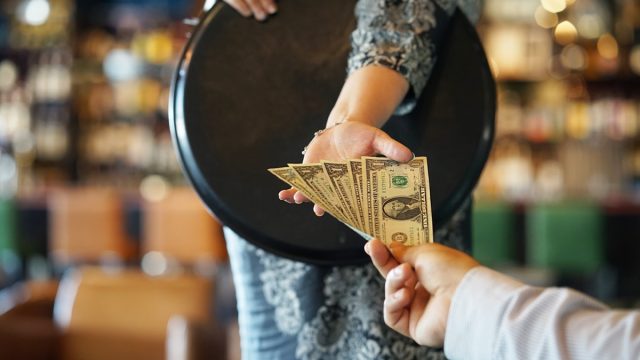
Tipping has become a surprisingly controversial topic over the last few years—especially as cultural norms on giving gratuity in the U.S. have changed. But even if you're someone who prides yourself on showing appreciation to service workers, you might still be making mistakes. In fact, those shifting cultural norms mean that once common practices are now considered rude. To help you avoid any gratuity gaffes, we talked to etiquette and financial experts for insight on what not to be doing. Read on to discover seven "polite" tipping habits that are actually offensive.
RELATED: 6 Places You Should Never Tip, According to Etiquette Experts.
1
Always following the $1 tip per drink rule
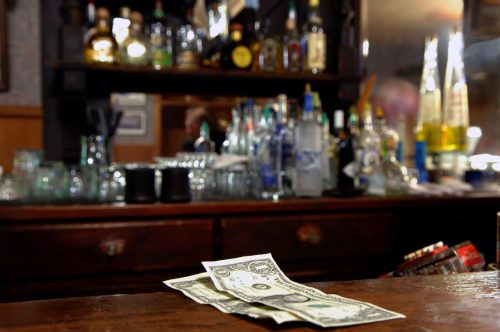
Many people adhere to the common tipping rule of $1 per drink when they go to the bar. But "depending on where you are and what you are drinking," this might not be appropriate, Jodi RR Smith, etiquette expert and founder of founder of Mannersmith Etiquette Consulting, warns.
"If it's $5 pitchers at a dive bar on a weeknight, sure a buck a beer might work," Smith says. "But if you are ordering pricey mixed drinks at the 'it' bar in Manhattan on the weekend, you had best be tipping 10 percent (or more!) of the bar tab."
2
Tipping with loose change
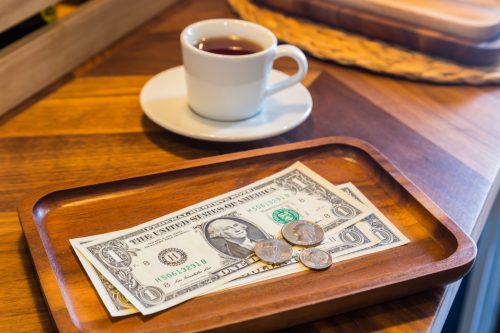
Cash is king to a lot of service workers. But keep the loose change off the table and out of the jar—even if you would be able to tip more money by adding it in, according to experienced etiquette expert Lisa Mirza Grotts.
"Money is dirty, so to tip with a pile of loose coins is a bridge too far," she says.
Plus, it seems lazy and shows a lack of planning ahead on your part, Grotts adds. "Go the extra mile: Use bills or credit," she advises.
RELATED: 6 Surprising New Rules for Tipping, According to Etiquette Experts.
3
Giving a non-monetary tip

You may be tempted to bring your hairdresser or favorite barista a gift in lieu of giving them a cash or credit gratuity. But "non-monetary tipping offers another level of complexity," Michael Barton, personal finance advisor and senior writer for Wallet Savvy, cautions.
"While a gift may seem considerate and thoughtful, it introduces a plethora of assumptions about the recipient's needs and wishes," Barton explains. "More importantly, it skirts the fundamental principle of tipping: to reward quality service with direct monetary compensation."
4
Not tipping on the full amount if there's a discount
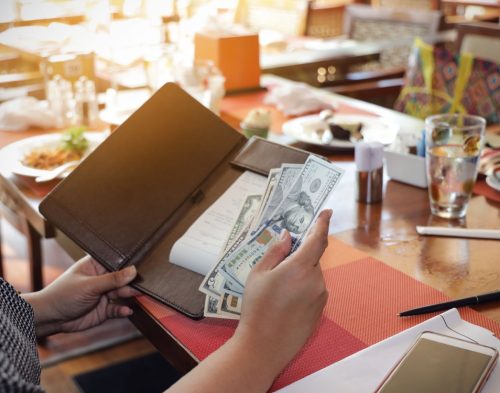
If you've had part of your meal (or even all of it) discounted or comped, you might not think twice about tipping on that discounted amount. But doing so can be seen as rude, according to Smith.
"When dining with a coupon or discount, your tip should always be on the full and unadjusted cost of the meal," she shares, referencing her own recent experience at a nice restaurant.
"The owner was kind enough to comp the bill for the entire table," she recalls. "Even though the bill was officially zero, I still tipped on what would have been the full cost of the meals."
RELATED: 5 Places Where Tipping Can Get You Much Better Service, Experts Say.
5
Giving an excessive tip
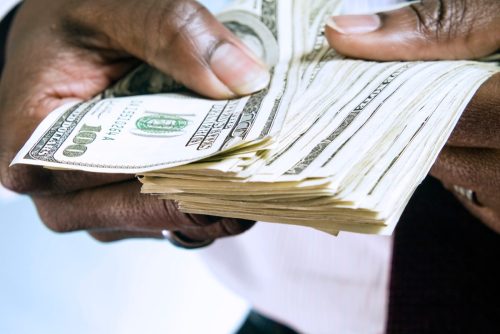
On the other hand, giving too much gratuity may not be as polite as you think it is, according to Grotts.
"Generosity is the gateway to happiness, but leaving $40 when it should be $10 is over the top," she says.
Tipping way too much can put pressure on a service worker, cause them guilt, or even be seen as rude due to cultural differences, Grotts explains.
6
Only writing in the total amount

If you're bad with numbers, you might consider just writing in the total amount for your bill to save your server any confusion.
"Some individuals round up the total bill to the nearest dollar or leave an arbitrary amount without calculating the tip percentage," Sammie Ellard-King, finance expert and founder of Up the Gains, tells Best Life. "But this can result in undertipping or overtipping unintentionally."
To avoid this, just fill out both the tip line and the total line, Smith advises.
"Nowadays, the majority of us have supercomputers in our pockets that can easily compute the tip," she notes. "Plus, most venues will include either the percentage choices as you check out or they have the percentages included right on the check for you to choose."
So at the end of the day, there should be no excuses.
RELATED: 5 Signs People Think You're a Bad Tipper.
7
Considering 15 percent the base tipping rate
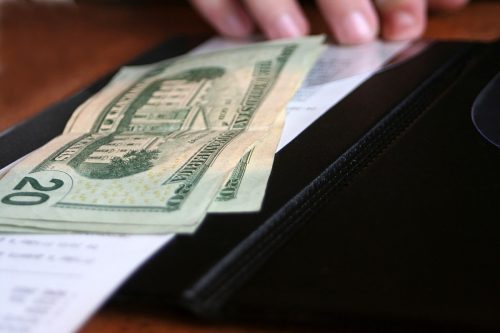
At one point in time, 15 percent was seen as a good tip. But if you still consider that to be the base tipping rate, you could end up offending those serving you.
"The average good tip has shifted closer to 20 percent or even higher," Carter Seuthe, financial expert and CEO of Credit Summit Debt Consolidation, confirms.
Looking at tipping as a scale, a 25 to 30 percent tip would likely now be considered a very good tip no matter where you go, while "15 percent in 2023 might suggest to your server you were not super pleased with their service," according to Seuthe.
"So it's good to keep in mind shifting expectations as the cost of living continues to rise and impact the expected tip percentages," he says.
For more etiquette advice delivered straight to your inbox, sign up for our daily newsletter.





















